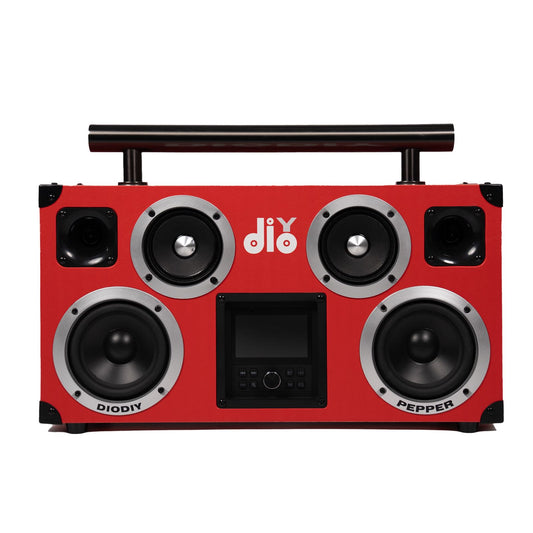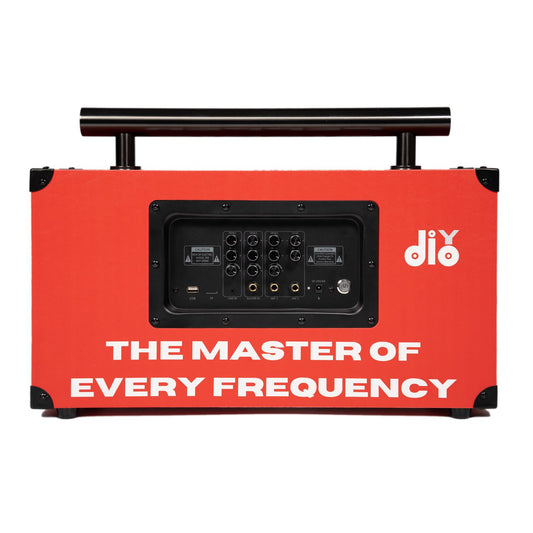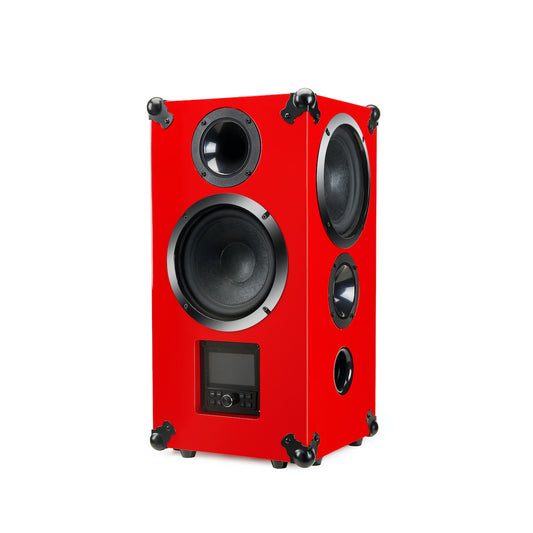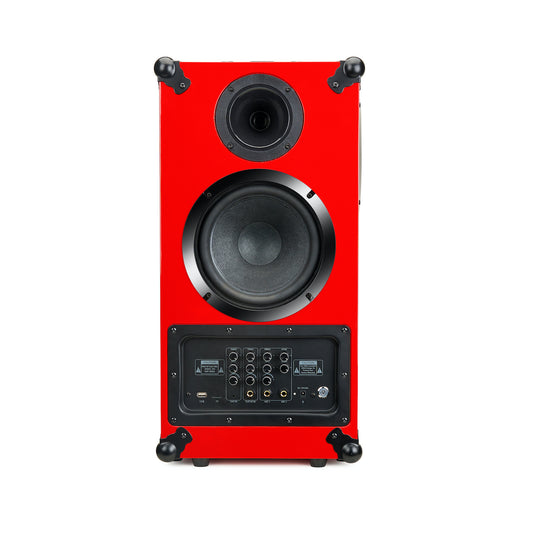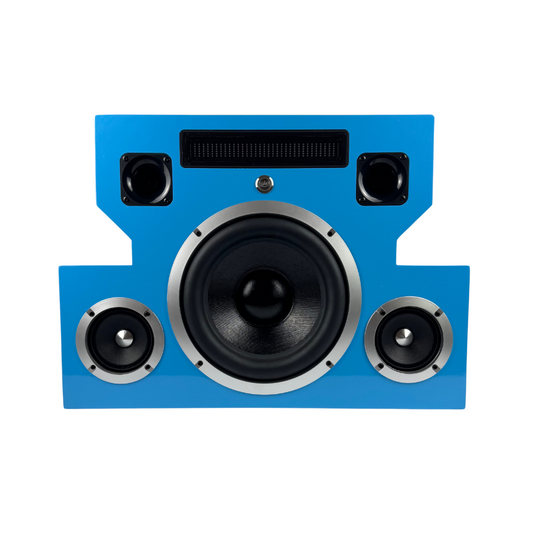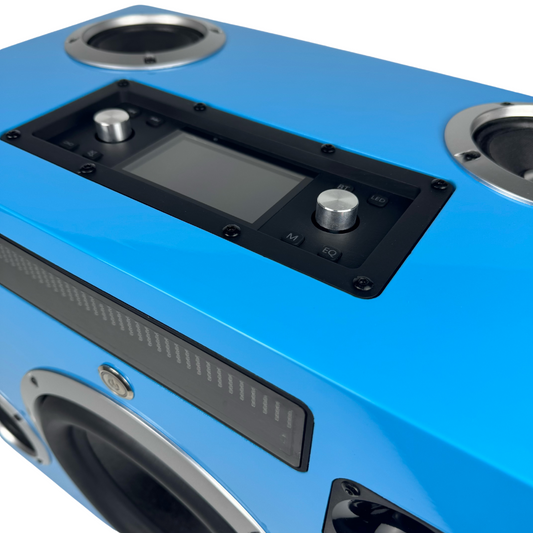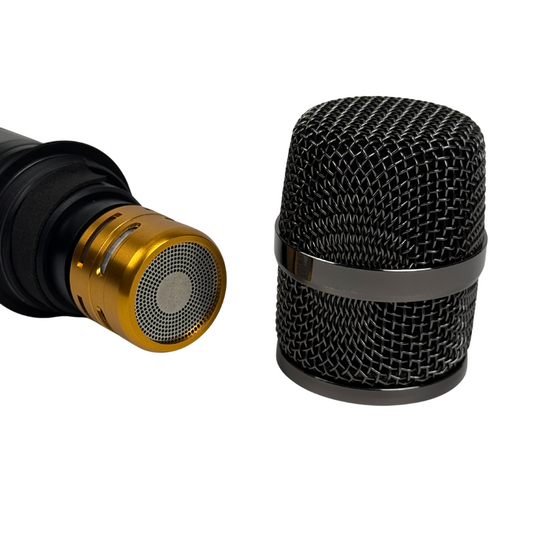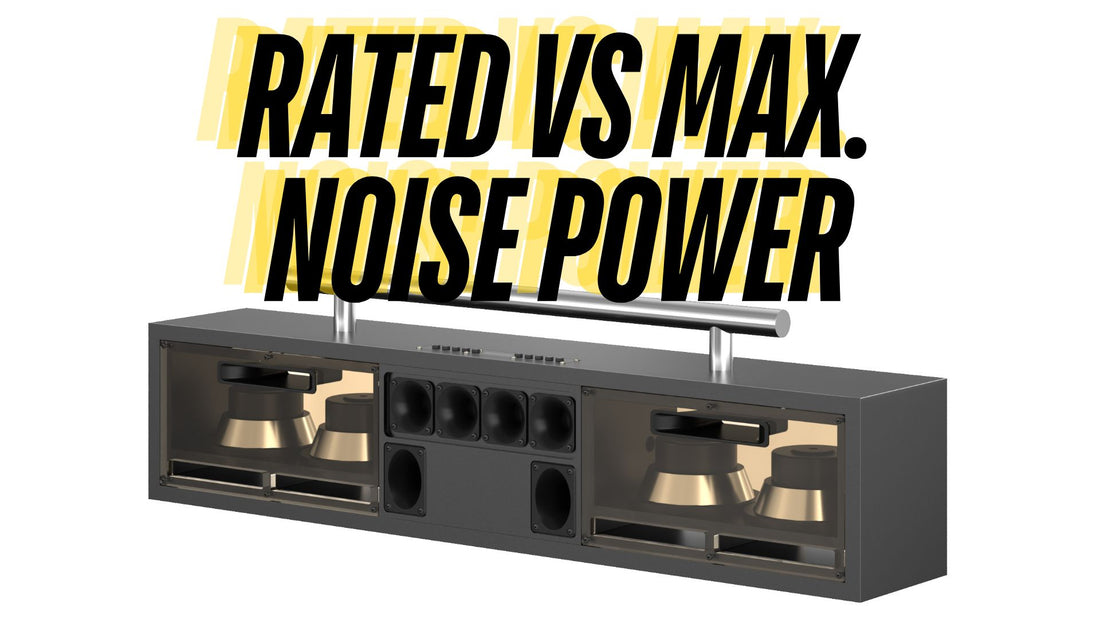
Rated vs Maximum Noise Power: Understanding the Difference
Share
When choosing a high-quality speaker or Bluetooth speaker, it's common to come across technical specifications like "rated noise power" and "maximum noise power." Understanding these terms can help you make informed decisions when comparing speakers and speaker components. In this blog, we'll explain what rated and maximum noise power mean, how they are measured, and which one is more crucial when choosing a speaker for your needs.
What is Rated Noise Power?
Rated noise power (sometimes called "nominal power" or "RMS power") refers to the continuous power that a speaker can handle without incurring any damage. This power rating gives an idea of how much energy the speaker can manage over an extended period while delivering consistent, high-quality sound.
Rated noise power is measured in watts and is often denoted as RMS (Root Mean Square) power. The RMS value provides a realistic representation of the power handling capacity of the speaker and indicates how well the speaker can operate consistently without overheating or distorting the sound.
How is Rated Noise Power Measured?
The measurement of rated noise power involves applying a continuous signal—usually a sine wave or a mix of frequencies that simulate real-world audio—over an extended period. This test is conducted under controlled conditions to ensure that the speaker can sustain that level of power for hours without any degradation in performance or damage.
The rated noise power is an essential indicator of a speaker's long-term reliability and performance. If you intend to use the speaker for long sessions, knowing its rated noise power will help you choose a speaker that can sustain continuous playback without overheating or failing.

DIODIY's 10" Redcore Woofer with 200W Rated Noise Power
What is Maximum Noise Power?
Maximum noise power, on the other hand, refers to the peak power that a speaker can handle for short bursts. This is the highest amount of power that the speaker can tolerate without suffering damage. Maximum noise power is also measured in watts and is often referred to as "peak power."
Unlike rated noise power, the maximum power rating is not meant to be sustained continuously. It represents the speaker’s capacity to handle occasional spikes in volume—such as during a dramatic musical passage or a particularly loud sound effect—without blowing out or causing permanent damage to the components.
How is Maximum Noise Power Measured?
The measurement of maximum noise power involves applying a brief burst of high-level power to the speaker to see if it can tolerate the peak. The speaker's drivers are designed to handle occasional bursts of energy, but they cannot do so continuously without risking damage.
Maximum power ratings can be a bit misleading because they do not indicate how the speaker will perform under regular, long-term use. Instead, they show the highest level of power the speaker can tolerate momentarily without damage. It is often used as a marketing metric to make speakers look more powerful, even if they aren't able to maintain that power output for extended periods.
Which Data is More Important?
When evaluating and comparing speakers or loudspeakers, it’s essential to know which specification matters more: rated noise power or maximum noise power.
Why Rated Noise Power Matters More
Rated noise power is generally the more important specification when it comes to choosing a speaker. Here’s why:
- Real-World Performance: Rated noise power gives you a realistic idea of how the speaker will perform during regular use. It tells you how much power the speaker can handle consistently without risking damage, making it a much better indicator of the speaker's everyday performance.
- Consistency: A speaker's rated noise power tells you how effectively it can handle continuous power without distortion. This consistency is crucial if you are planning to use the speaker for extended listening sessions, such as during parties or events where high-quality audio is required for hours.
- Reliability: High RMS power indicates that the speaker is designed to manage higher energy levels without compromising sound quality. This is particularly important if you want a speaker that will last for a long time and deliver reliable performance without breaking down.
When Does Maximum Noise Power Matter?
Maximum noise power is not entirely irrelevant, but it is less critical than rated power for most practical applications. It’s useful in a few specific cases:
- Short Bursts of High Volume: If you are looking for a speaker that can handle short bursts of extreme volume—such as when watching action movies or playing music with lots of dynamic contrast—then the maximum noise power may be of interest. However, even in these cases, it's rare for most users to require sustained levels at peak power.
- Marketing Purposes: Maximum noise power is often used as a marketing tactic to make speakers seem more powerful. A high peak power rating can attract buyers, but it doesn’t provide an accurate representation of the speaker's real capabilities over a longer time.
Choosing the Right Speaker Based on Power Ratings
When choosing a high-quality speaker or drivers, consider the following points to make an informed decision:
- Purpose of Use: Determine how you plan to use the speaker. If you need a speaker for long hours of consistent playback—such as for home use or during events—then rated noise power is the metric that matters most. It will tell you whether the speaker can maintain high-quality sound over extended periods without overheating or degrading.
- Peak vs. Consistent Performance: If you want a speaker that can manage occasional loud bursts without distortion, you can look at the maximum noise power as a secondary metric. But remember that a speaker with a high peak power rating isn't necessarily better if it cannot sustain high-quality sound at normal listening levels.
- Balance Both Specifications: Ideally, a good speaker should have a reasonable RMS power rating and an adequately high maximum power rating. For example, if a speaker has an RMS power of 50 watts and a peak power of 150 watts, it means the speaker can deliver a consistent 50 watts of clean sound, while also being capable of handling short bursts up to 150 watts when needed.
- Look Beyond the Numbers: Keep in mind that power ratings are just one aspect of a speaker's overall performance. Other factors like the driver quality, frequency response, impedance, and even cabinet design play significant roles in determining the overall sound quality of a speaker.
Common Misconceptions About Power Ratings
It's easy to get caught up in the numbers game when looking at speaker power ratings. Here are some common misconceptions that are worth debunking:
- Higher Wattage Equals Better Sound: A common myth is that a speaker with a higher power rating will always sound better. While higher wattage can allow for greater volume, the overall sound quality depends on numerous factors beyond just power, such as driver design and enclosure quality.
- Peak Power Is the Same as RMS Power: Another misconception is that peak power is indicative of the speaker's overall strength. In reality, peak power only tells you how much power the speaker can handle in short bursts, while RMS power is the more reliable measure of its continuous performance.
- Bigger Is Always Better: While larger speakers and higher power ratings may seem appealing, they are not always better if you don't need that level of power. For most home users, a speaker with a moderate RMS power rating is more than enough to deliver excellent sound without distortion.
Conclusion: Rated vs Maximum Noise Power
When it comes to understanding rated vs maximum noise power, it's essential to know what each term means and how it affects the performance of a high-quality speaker. Rated noise power is a measure of how much power a speaker can handle continuously, while maximum noise power represents the peak power it can handle for short periods.
For practical use, rated noise power is the more critical specification. It tells you how well the speaker can perform over extended listening sessions without the risk of damage or distortion. On the other hand, maximum noise power can be a useful number to consider if you want to know how well the speaker can handle occasional peaks, but it shouldn't be the primary metric for determining overall quality.
When choosing a Bluetooth speaker or any other speaker component, remember that high-quality sound is not just about power ratings—it's about the overall design and engineering of the speaker. So, make sure to consider all aspects of the speaker, including rated noise power, driver quality, and other performance factors, to find the best option for your needs.


